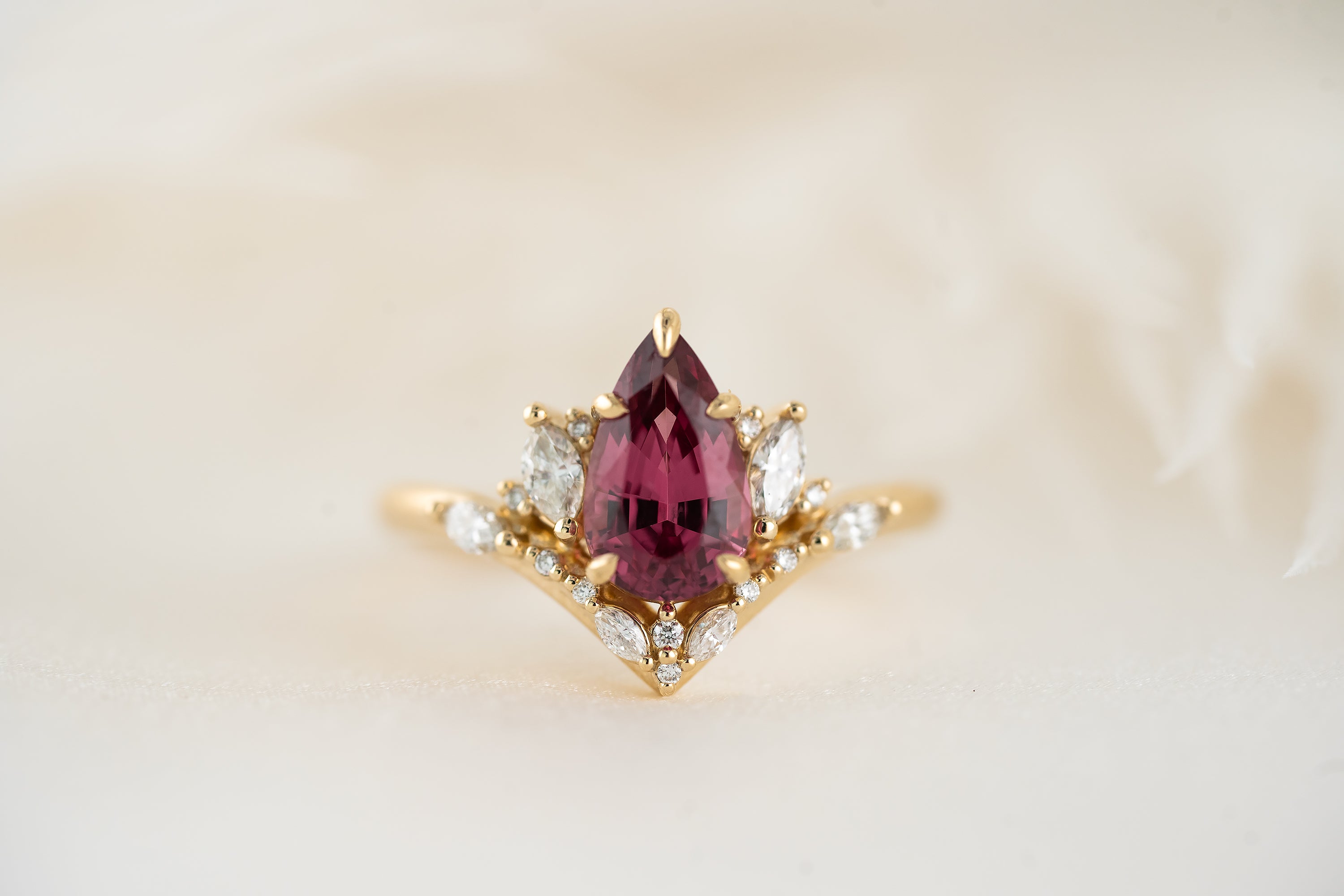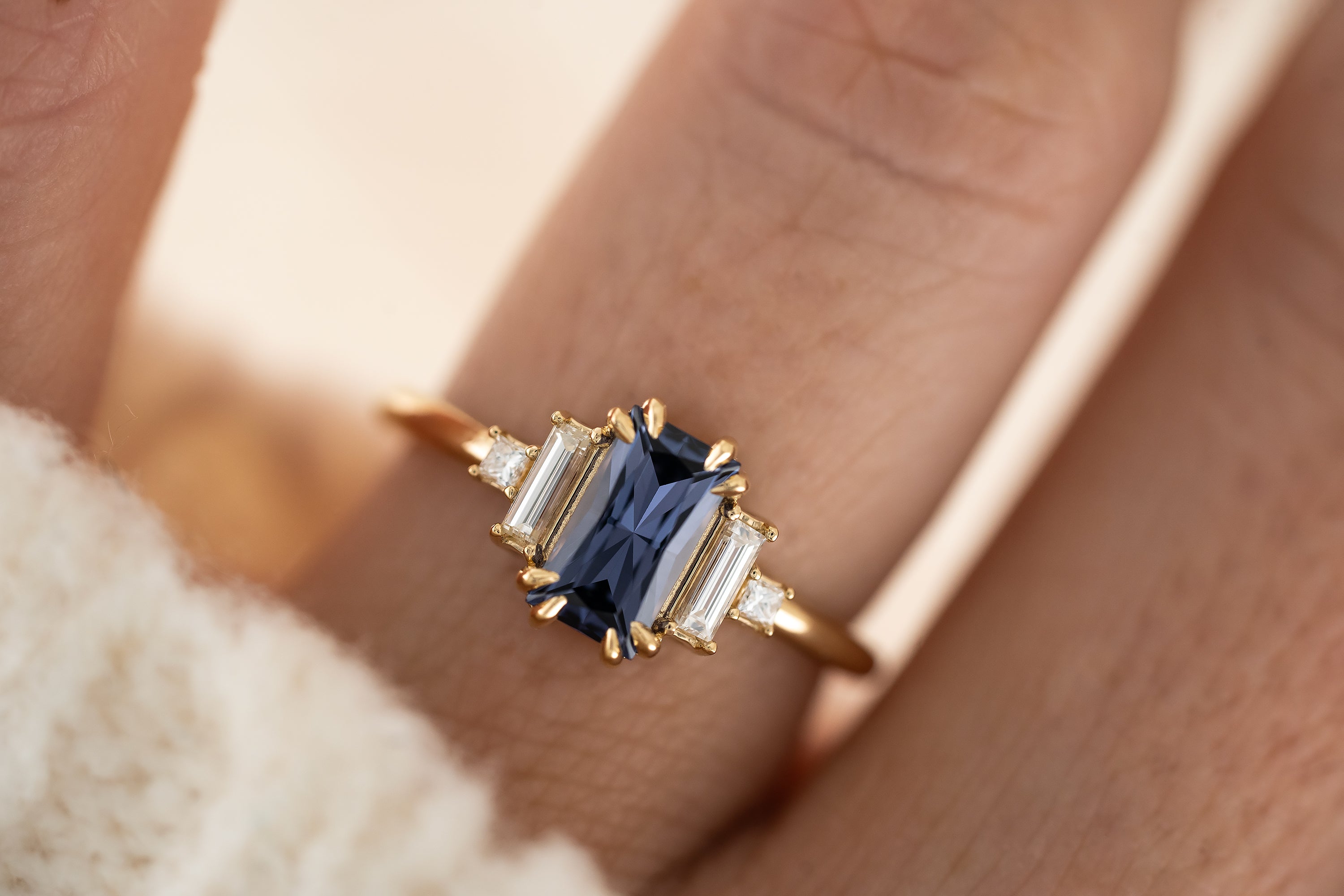






About Natural Spinel
-

Hardness
Spinel has a hardness of 8 on the Mohs scale, making it a very durable gemstone that is resistant to scratches and everyday wear and tear. This hardness places spinel just below sapphires and rubies, making it an excellent choice for engagement rings, which are worn daily and need to withstand constant handling.
- The Mohs scale is a measurement system used to assess and compare the hardness of minerals. Developed by Friedrich Mohs in 1812, it assigns a ranking from 1 to 10 to minerals based on their ability to scratch or be scratched by other minerals. This scale provides a simple and practical way to understand the relative hardness of different minerals, with 1 being the softest (e.g., talc) and 10 the hardest (e.g., diamond).
-

Color Range & Varieties
Red Spinel: This variety is highly prized for its deep, rich red color, which can resemble the color of ruby. Red spinel is often found in the same regions as rubies and has historically been mistaken for ruby due to its similar color and appearance.
Blue Spinel: Blue spinel ranges in color from light sky blue to deep cobalt blue. The most valued blue spinels have a pure, intense color without gray or green overtones. This variety is less common and highly sought after, especially those with a vivid cobalt blue hue.
Pink Spinel: Pink spinels can range from delicate pastel pinks to vibrant hot pinks. These stones are popular for their bright and lively color, which can rival the finest pink sapphires.
Purple Spinel: Purple spinel varies from soft lilac to deep violet hues. These gems are valued for their unique color, which can be more saturated than many amethysts, offering a beautiful alternative to other purple gemstones.
Black Spinel: Black spinel is opaque and has a striking, jet-black color with a high luster. It is often used as an alternative to black diamonds or onyx in jewelry and adds a bold, dramatic look to designs.
Lavender Spinel: Lavender spinel features a soft purple-gray hue that can appear pastel or slightly muted. This variety is less common and admired for its subtle, unique color.
Orange and Yellow Spinel: Though rare, some spinels exhibit shades of orange or yellow. These colors are typically lighter and less intense but still offer a unique and appealing option for jewelry.
Gray Spinel: Gray spinel comes in a range of shades from light gray to dark charcoal.
-

Origin, Stability, & Treatments
Origin
Myanmar (Burma): Known for producing some of the finest red and pink spinels, particularly from the Mogok region. These spinels are highly prized for their rich color and high clarity.
Sri Lanka (Ceylon): Known for producing a wide range of spinel colors, including vibrant blues, pinks, and purples. Sri Lankan spinels are often known for their good clarity and bright, saturated colors.
Tanzania: This region, especially around the Mahenge and Tunduru areas, is known for producing unique and vivid spinels in various colors, including bright pinks, reds, and blues.
Vietnam: Vietnamese spinel, particularly from the Luc Yen region, is recognized for its vibrant red, blue, and purple varieties. The blues from Vietnam are especially admired for their intense, cobalt hue.
Afghanistan, Tajikistan, and Pakistan: These regions produce fine-quality spinels, often in vibrant reds and pinks, similar to those found in Myanmar.
Stability
Spinel is color-stable. It does not fade or change color when exposed to sunlight, heat, or chemicals, making it a reliable choice for everyday jewelry. Spinel's vibrant colors remain consistent over time, adding to its appeal and durability.
Treatments
Heating: Occasionally, spinels may be heat-treated to improve their color or clarity. This is less common compared to other gemstones like sapphires and rubies, and when it is done, the treatment is usually stable and does not require special care.Fracture Filling or Surface Coating: These treatments are rare for spinel but could theoretically be used to improve the appearance of heavily included or surface-damaged stones. Such treatments should always be disclosed to buyers, as they can affect the stone's durability and value.
We disclose all treatments on our stones. Our spinels are not treated.













